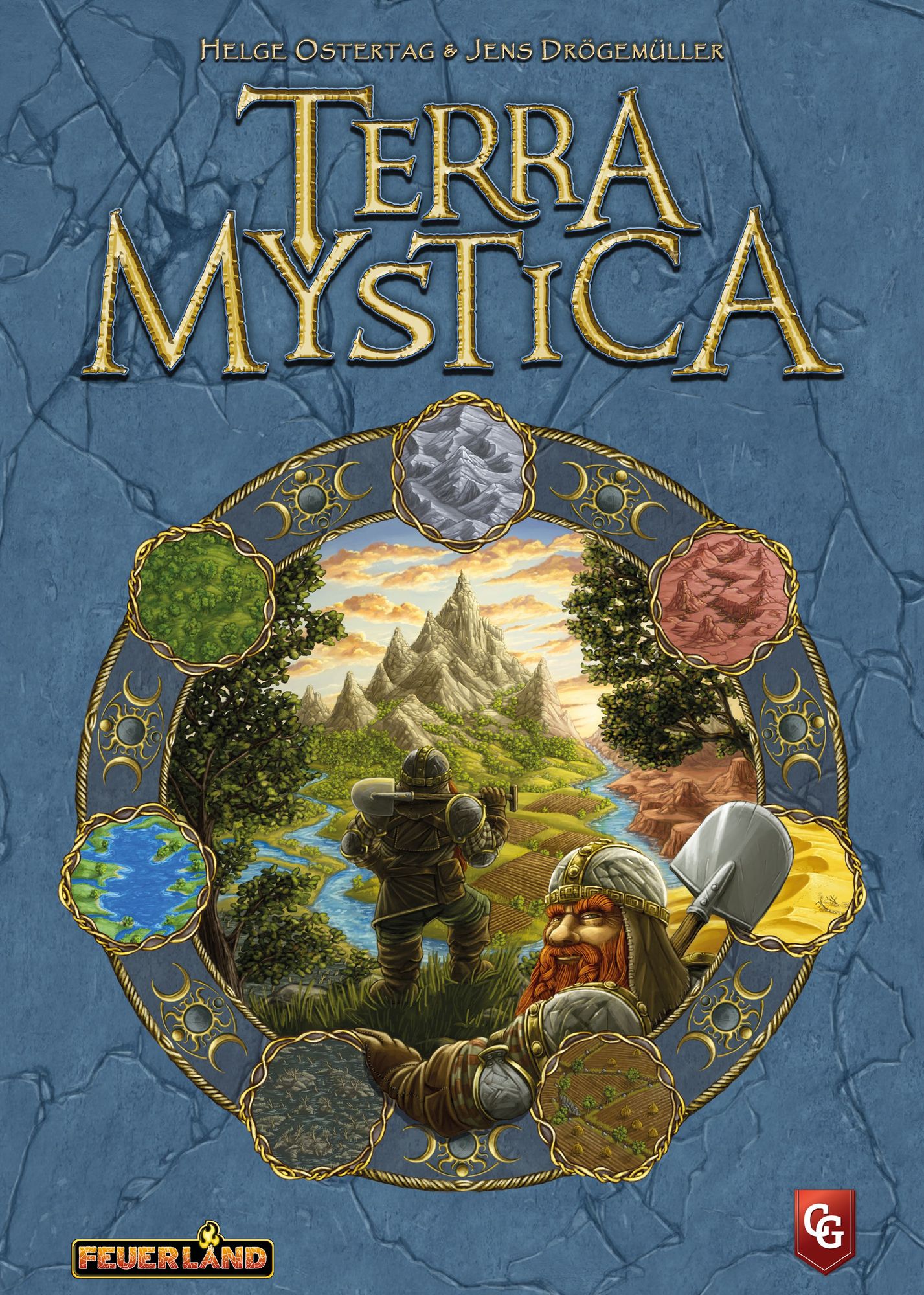
Terra Mystica (2012)
2 - 5 persone
60 - 150 min
12+
Al momento questo prodotto non è disponibile presso nessun venditore.
Nomi alternativi: Terra Mystica, Терра Мистика, テラミスティカ, 神秘大地, 테라 미스티카
Editori: Feuerland Spiele, Bard Centrum Gier, Capstone Games, Cranio Creations, Devir, Filosofia u00c9ditions, FunBox Jogos, Gu00e9m Klub Kft., HomoLudicus, Mandala Jogos, MINDOK, Swan Panasia Co., Ltd., White Goblin Games, Z-Man Games, Zvezda, u30c6u30f3u30c7u30a4u30bau30b2u30fcu30e0u30ba(TendaysGames)
Riconoscimenti: 2012 Jocul Anului u00een Romu00e2nia Advanced Finalist, 2012 Jogo do Ano Nominee, 2012 Meeples' Choice Nominee, 2012 Meeples' Choice Winner, 2013 Deutscher Spiele Preis Best Family/Adult Game Winner, 2013 Golden Geek Best Board Game Artwork/Presentation Nominee, 2013 Golden Geek Best Strategy Board Game Winner, 2013 Golden Geek Board Game of the Year Winner, 2013 Golden Geek Most Innovative Board Game Nominee, 2013 Gouden Ludo Nominee, 2013 Gouden Ludo Winner, 2013 Hra roku Nominee, 2013 Hra roku Winner, 2013 International Gamers Award - General Strategy: Multi-player Nominee, 2013 International Gamers Award - General Strategy: Multi-player Winner, 2013 JUG Adult Game of the Year Finalist, 2013 JUG Adult Game of the Year Winner, 2013 Le Lys Passionu00e9 Finalist, 2013 Nederlandse Spellenprijs Best Expert Game Nominee, 2013 Nederlandse Spellenprijs Best Expert Game Winner, 2013 Spiel des Jahres Kennerspiel des Jahres Recommended, 2013 Tric Trac d'Or Winner, 2013 Tric Trac Finalist, 2014 Diana Jones Award for Excellence in Gaming Nominee, 2014 Gra Roku Advanced Game of the Year Nominee, 2014 Gra Roku Advanced Game of the Year Winner, 2014 Ludoteca Ideale Official Selection Winner, 2015 MinD-Spielepreis Complex Game Nominee, 2015 MinD-Spielepreis Complex Game Winner
Descrizione: In the land of Terra Mystica dwell 14 different peoples in seven landscapes, and each group is bound to its own home environment, so to develop and grow, they must terraform neighboring landscapes into their home environments in competition with the other groups.
Terra Mystica is a full information game, without any luck, that rewards strategic planning. Each player governs one of the 14 groups. With subtlety and craft, the player must attempt to rule as great an area as possible and to develop that group's skills. There are also four religious cults in which you can progress. To do all that, each group has special skills and abilities.
Taking turns, the players execute their actions on the resources they have at their disposal. Different buildings allow players to develop different resources. Dwellings allow for more workers. Trading houses allow players to make money. Strongholds unlock a group's special ability, and temples allow you to develop religion and your terraforming and seafaring skills. Buildings can be upgraded: Dwellings can be developed into trading houses; trading houses can be developed into strongholds or temples; one temple can be upgraded to become a sanctuary. Each group must also develop its terraforming skill and its skill with boats to use the rivers. The groups in question, along with their home landscape, are:
Desert (Fakirs, Nomads)
Plains (Halflings, Cultists)
Swamp (Alchemists, Darklings)
Lake (Mermaids, Swarmlings)
Forest (Witches, Auren)
Mountain (Dwarves, Engineers)
Wasteland (Giants, Chaos Magicians)
Proximity to other groups is a double-edged sword in Terra Mystica. Being close to other groups gives you extra power, but it also means that expanding is more difficult...
Terra Mystica FAQ
Terra Mystica is a full information game, without any luck, that rewards strategic planning. Each player governs one of the 14 groups. With subtlety and craft, the player must attempt to rule as great an area as possible and to develop that group's skills. There are also four religious cults in which you can progress. To do all that, each group has special skills and abilities.
Taking turns, the players execute their actions on the resources they have at their disposal. Different buildings allow players to develop different resources. Dwellings allow for more workers. Trading houses allow players to make money. Strongholds unlock a group's special ability, and temples allow you to develop religion and your terraforming and seafaring skills. Buildings can be upgraded: Dwellings can be developed into trading houses; trading houses can be developed into strongholds or temples; one temple can be upgraded to become a sanctuary. Each group must also develop its terraforming skill and its skill with boats to use the rivers. The groups in question, along with their home landscape, are:
Desert (Fakirs, Nomads)
Plains (Halflings, Cultists)
Swamp (Alchemists, Darklings)
Lake (Mermaids, Swarmlings)
Forest (Witches, Auren)
Mountain (Dwarves, Engineers)
Wasteland (Giants, Chaos Magicians)
Proximity to other groups is a double-edged sword in Terra Mystica. Being close to other groups gives you extra power, but it also means that expanding is more difficult...
Terra Mystica FAQ
